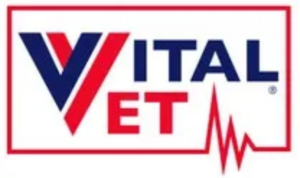Post Operative Recovery
Revive. Rebuild. Renew: Your Partner in Post-Surgical Recovery.
Physiotherapy and hydrotherapy play pivotal roles in the post-surgical recovery of dogs, offering tailored rehabilitation strategies to optimize healing and restore function. Following orthopedic surgeries such as cruciate ligament repairs or hip replacements, these therapies are instrumental in reducing pain, swelling, and inflammation while promoting muscle strength, joint mobility, and overall physical conditioning.
For instance, in cases of cranial cruciate ligament (CCL) surgery, physiotherapy techniques like passive range of motion exercises and laser therapy can enhance tissue healing and prevent scar tissue formation around the surgical site, facilitating smoother joint movement. Hydrotherapy allows controlled, low-impact exercise that supports weight-bearing and enhances range of motion without imposing excessive strain on healing tissues. The buoyancy of water aids in reducing weight-bearing forces, making it ideal for early mobilization post-surgery.
Both modalities can also address compensatory gait patterns and muscle imbalances, restoring optimal biomechanics and reducing the risk of secondary complications. Ultimately, integrating physiotherapy and hydrotherapy into the post-operative care plan promotes a faster, more comfortable recovery and improves the long-term outcomes and quality of life for dogs undergoing surgical interventions.
Common surgeries that will benefit from our rehabilitation programmes include:
Cruciate Ligament Repair
This surgery addresses injuries to the cruciate ligaments in the knee, such as cranial cruciate ligament rupture. Procedures may include extracapsular repair, TPLO (tibial plateau leveling osteotomy), TTA (tibial tuberosity advancement), or tightrope techniques.
Luxating Patella Repair
Luxating patella, or kneecap dislocation, is a common orthopedic issue in dogs, especially small breeds. Surgical correction involves realigning the patella and reconstructing supporting structures if necessary.
Hip Dysplasia Surgery
Dogs with hip dysplasia, a genetic condition causing hip joint instability, may require surgical interventions like femoral head ostectomy (FHO), triple pelvic osteotomy (TPO), or total hip replacement (THR) to alleviate pain and improve function.
Fracture Repair
Dogs can suffer from fractures due to trauma or underlying bone diseases. Fracture repair surgeries involve stabilizing the broken bones using techniques such as internal fixation (plates, screws, pins) or external fixation (external fixators).
Osteochondritis Dissecans (OCD) Surgery
OCD is a developmental orthopedic disease affecting joint cartilage. Surgical procedures may involve removing loose cartilage fragments or smoothing damaged surfaces to alleviate pain and restore joint function.
Elbow Dysplasia Surgery
Elbow dysplasia encompasses several developmental abnormalities affecting the elbow joint. Surgical options include fragment removal, joint debridement, or osteotomy to correct abnormal bone growth or alignment.
Patellar Luxation Repair
Patellar luxation, where the kneecap moves out of its normal position, may require surgical correction to prevent lameness and arthritis. Procedures involve realigning the patella and stabilizing the joint.
Angular Limb Deformity Correction
Dogs with angular limb deformities, such as bowed legs or crooked growth, may undergo corrective surgeries involving osteotomy (bone cutting) and realignment to restore normal limb alignment and function.
Osteotomy for Legg-Calvé-Perthes Disease
Legg-Calvé-Perthes disease is a hip disorder causing the femoral head to collapse. Surgical treatment involves removing the affected femoral head to alleviate pain and improve joint function.
Arthroscopy
Arthroscopic procedures are minimally invasive surgeries performed to diagnose and treat joint disorders such as joint inflammation, cartilage defects, or ligament injuries, using small incisions and specialized instruments.
Contact Us
- 07300 020 514
- bookings@apolloanimalphysio.com
- apolloanimalphysio@gmail.com
- Apollo Animal Physiotherapy, Old Haine Road, Ramsgate, CT12 5AG






